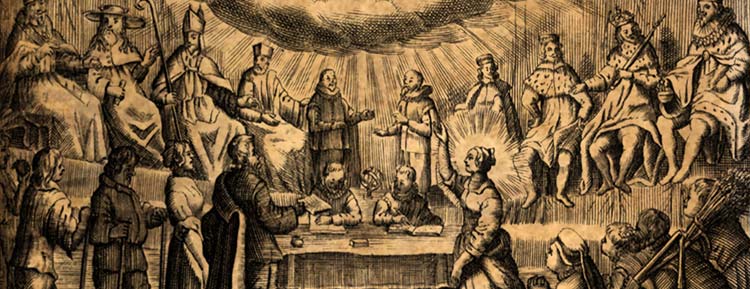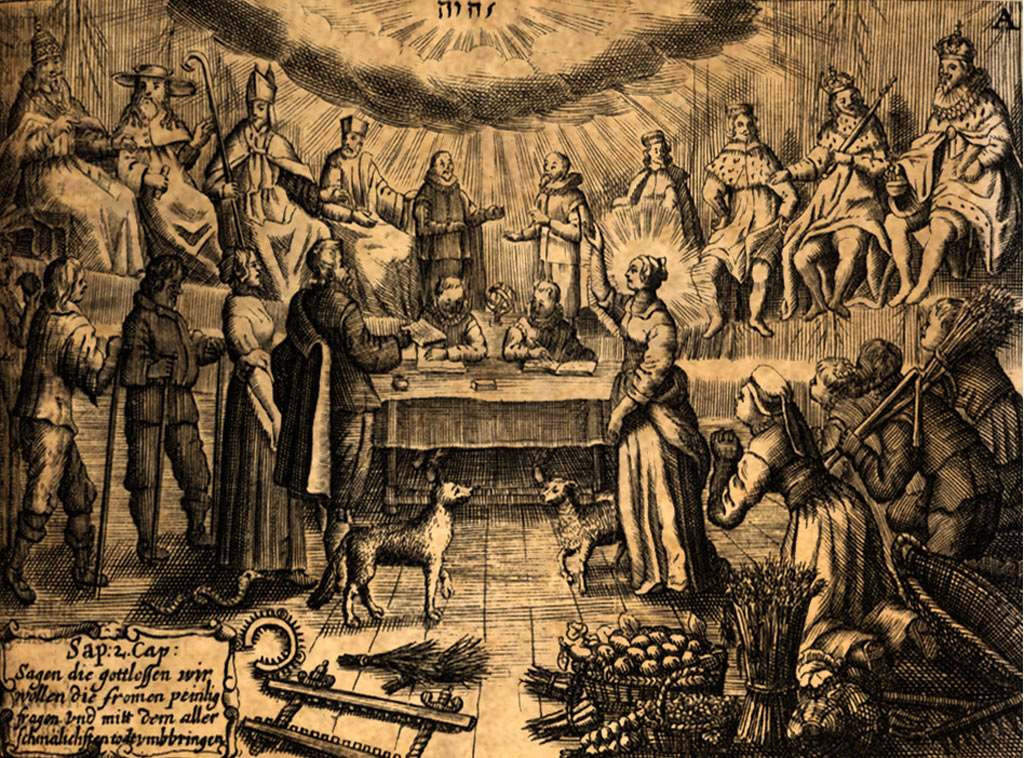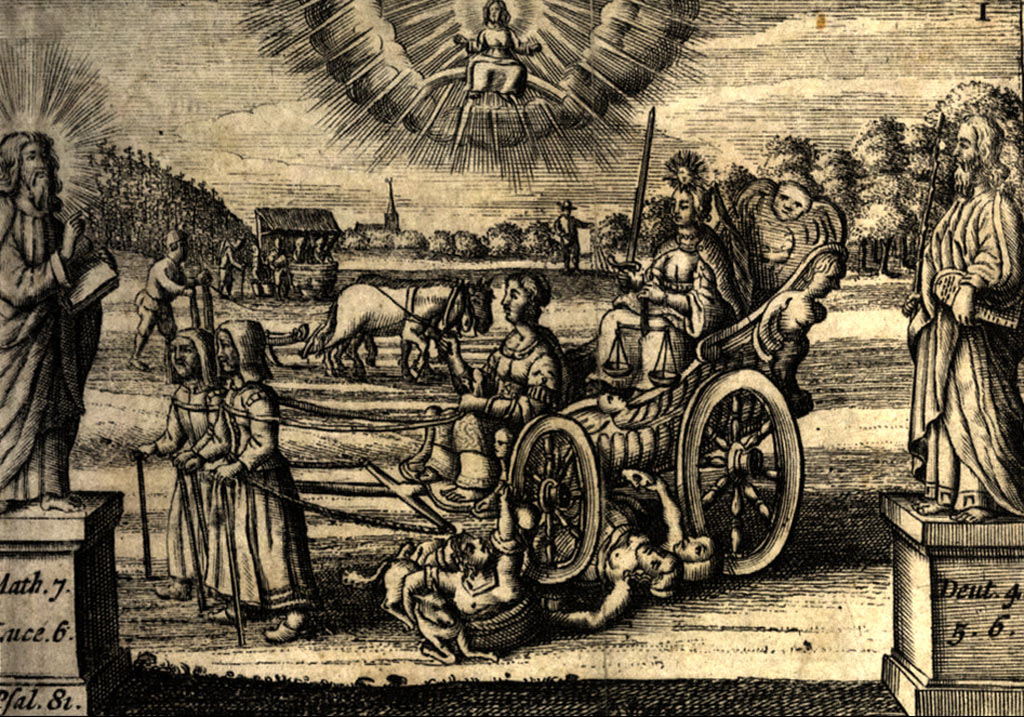
Persecution and judgement of witches hit the victims with in two ways. Neither the state nor the church wanted, that somebody could say, that they haven´t done everything to find and examine the members of the sect of witches. The system of jurification was led by a perfide plan.
"Dear brethren, if a person has sinned you who are religious do help him with a spirit of meekness to cope again.
(Paulus to the Galatians, VI, 1,2)
Words like these were not of much value anymore. The church had failed to encourage the growing numbers of apostates of their own teachings to abandon the heresies. Their usual means such as persuasion, intimidation and requests to do penance could not convince people to return into the community of true believers. Moreover, much to the anger of the church fathers, some of the reigning sovereigns took a lenient view to heretics.

The bull Ad Abolendam rescripted by Pope Lucius III in the year 1184 was one of the initiatives which furthered in the name of church the persecution of disagreeable subjects. At the beginning it was used against apostates of the church doctrine. Subsequently those were mainly the sectarian movements, especially those of the Cathars and Albigensians in South France who were even opposed by bloody crusades and real massacres. From thereon in each diocese the clergy was obliged to look out for the heretics and to eradicate heresy without “ifs” and “buts”.
And not only that; according to the fourth Lateran Council (1215) by Pope Innozenz III each ruler was threatened with the feared excommunication should he oppose the papal will for curbing heresy. By the argument that, according to ecclesiastical law, heresy was lèse-majesté the sovereigns were quickly convinced. In case of need they even threatened to dismiss the secular law enforcement officers, if they would not act against heretics within the meaning of the clergy.



Since the 12th century heretics were punished in differing ways in the various parts of Europe – by more and more harsher methods. Even Friedrich II (Frederick II), highly regarded by historian as “the first modern man on the throne” (Jacob Burckhardt) intensified the punishments against heretics even unto death by fire.
Also on the fourth Lateran Council the compulsory confession was introduced. The ulterior motive was to better control the faithful, expose potential heretics and assign them to the inquisition. Thus the confession became a diabolic scheme as part of the ecclesiastical inquisition proceedings where inquisitors savoured the extorted details of the accused.
